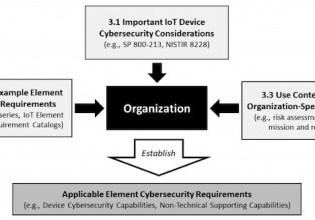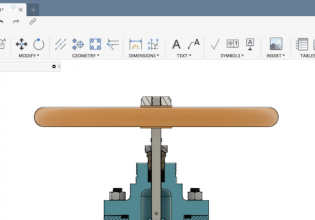如何读取微控制器数据表:简介和第一步
April 01, 2019byRobert KeimMCU数beplay无法取钱据表有时会呈现出大量的事实,数字和规格。该实用的,分步的指南将帮助您识别和提取所需的信息。
MCU数beplay无法取钱据表有时会呈现出大量的事实,数字和规格。该实用的,分步的指南将帮助您识别和提取所需的信息。
MicroControllers介绍中的先前文章系列中:
随着微控制器变得越来越复杂和强大,它们的数据表变得更长,更复杂。beplay无法取钱这并不奇怪,我当然不想批评制造商试图提供有关其零件的详细和全面信息。但是,事实是,这些冗长甚至令人生畏的数据表确实会带来一些问题。beplay无法取钱
数据表困难
First of all, they can be an obstacle for students and engineers who don’t have experience with microcontroller development. For basic applications that rely on example code and library functions, it may be possible to get the job done without even looking at the datasheet. In most cases, though, it is essential to consult and even study a microcontroller’s datasheet, and for those who are not yet familiar with MCU implementation and firmware development, it can be difficult to approach a document that has ten or even a hundred times more information than what is needed for the project at hand. This article is written primarily for readers who fall in this category.
但是,在过渡到更复杂的设备或新制造商时,即使经验丰富的MCU开发人员也可能会遇到一些“数据表压力”。我希望本文对属于第二类的人们也有所帮助。
一些规格规格
我想通过描述我在我的推荐的制造商的一些微控制器上附加到一些微控制器的文档来简要传达问题的范围。article on choosing MCUs.
- 来自德州仪器的MSP430FR5994“超低电源MCU”
- 数据表:171页
- 用户指南:1021页
- Errata: 15 pages
- The EFM8UB20F32G 8-bit USB microcontroller from Silicon Labs
- Datasheet: 57 pages
- 参考手册:308页
- Errata: 6 pages
- The STM32G0x0 “value line” 32-bit Arm Cortex-M0 microcontroller from STMicroelectronics
- 产品规格:96页
- 参考手册:913页
- 编程手册:110页
- 勘误:11页
步骤1:评估文件的性质
Despite the (oversimplified) title of this article, many microcontrollers do not have “a datasheet.” Various types of information may be distributed among multiple documents, and you need to briefly examine these documents in order to determine which ones have the specifications, descriptions, and recommendations that you really need during a particular phase of the development process.
例如,来自硅实验室的EFM8设备既具有数据表和参考手册。数据表包含功能,电气规格,一些基本硬件实施示例,引脚定义和足迹维度的列表。
Connection diagrams such as this one are provided in the EFM8 datasheet.
因此,在研究设备时,我将使用数据表,检查一些性能规格(当前消耗,振荡器精度,ADC非线性, etc.), creating the CAD component, and designing the schematic.
The reference manual, on the other hand, has detailed information about internal memory, interrupts, clock sources, the processor core, and all the peripherals.
外围功能的详细描述(例如此图I2Ctransaction) are provided only in the EFM8 reference manual, not the datasheet.
The peripheral sections have register descriptions that provide all the information that I need to configure and implement a peripheral’s functionality. Thus, the reference manual is relevant primarily to firmware development, though it certainly does include information that must be incorporated into the schematic.
Step 2: Ignore the Core
Though I stubbornly insist upon the value ofassembly language,我认识到,总的来说,这不再是固件开发的实用方法,我毫不怀疑,几乎每个阅读本文的人都会在C/C ++中编写MCU代码。这意味着编译器将自动管理与微控制器内部功能有关的许多详细信息,因此您可以安全地忽略这些细节的绝大多数(至少在最初)。
例如,MSP430FR59XX用户指南将大约40页专用于CPU。在许多应用程序中,所有这些信息都是不必要的。
幸运的是,这种信息(来自MSP430FR59XX用户指南)通常仅对编译器而言很重要,而不是编写代码的人。
The bottom line here is to think about all of the processor-related details that you do not need to worry about when you’re writing code in C/C++, and then try to identify the corresponding sections of the datasheet so that you can skip them.
步骤3:不要仔细检查电气规格
Semiconductor manufacturers typically do an excellent job of thoroughly characterizing their devices. However, in my real-life engineering work—from my first day on the job to this present moment—I have found that only a small proportion of a device’s electrical specifications are relevant to a given project.
Thus, don’t be intimidated by a long datasheet section filled with specification tables, footnotes, plots, and timing diagrams. If there are a few specs that are particularly critical for your application, by all means check them, but also remember that empirical data gathered using your system under your operational parameters will be more valuable than the numbers in the datasheet.
Recap
我们已经看到,现代微控制器的文档可能会成为障碍,对于那些对该领域的新手,甚至对于经验丰富的工程师而言,当然。本文介绍了我针对文档过载的前三个建议,我们将在下一篇文章中继续讨论。
Intro to Microcontrollers series
本文是较大系列的一部分。您可以找到以下其余文章:








Can you explain how to retrieve MCU program.
I’d add one more point: Go to the absolute maximums section of the electrical specifications, and check whether they could be exceeded. The device will almost certainly survive momentary transgression of these arbitrarily yes/no thresholds, but when this happens all bets are off, especially in a production design. This requires a bit of thought and experience (for example to know what will happen when connecting 5V signals to 3V3 pins) but is worth the effort, because it usually means something has been overlooked and devices will start failing in the field in the fraction of a %. Get this right and the failure rate will be in the parts per million, as the manufacturer intended.